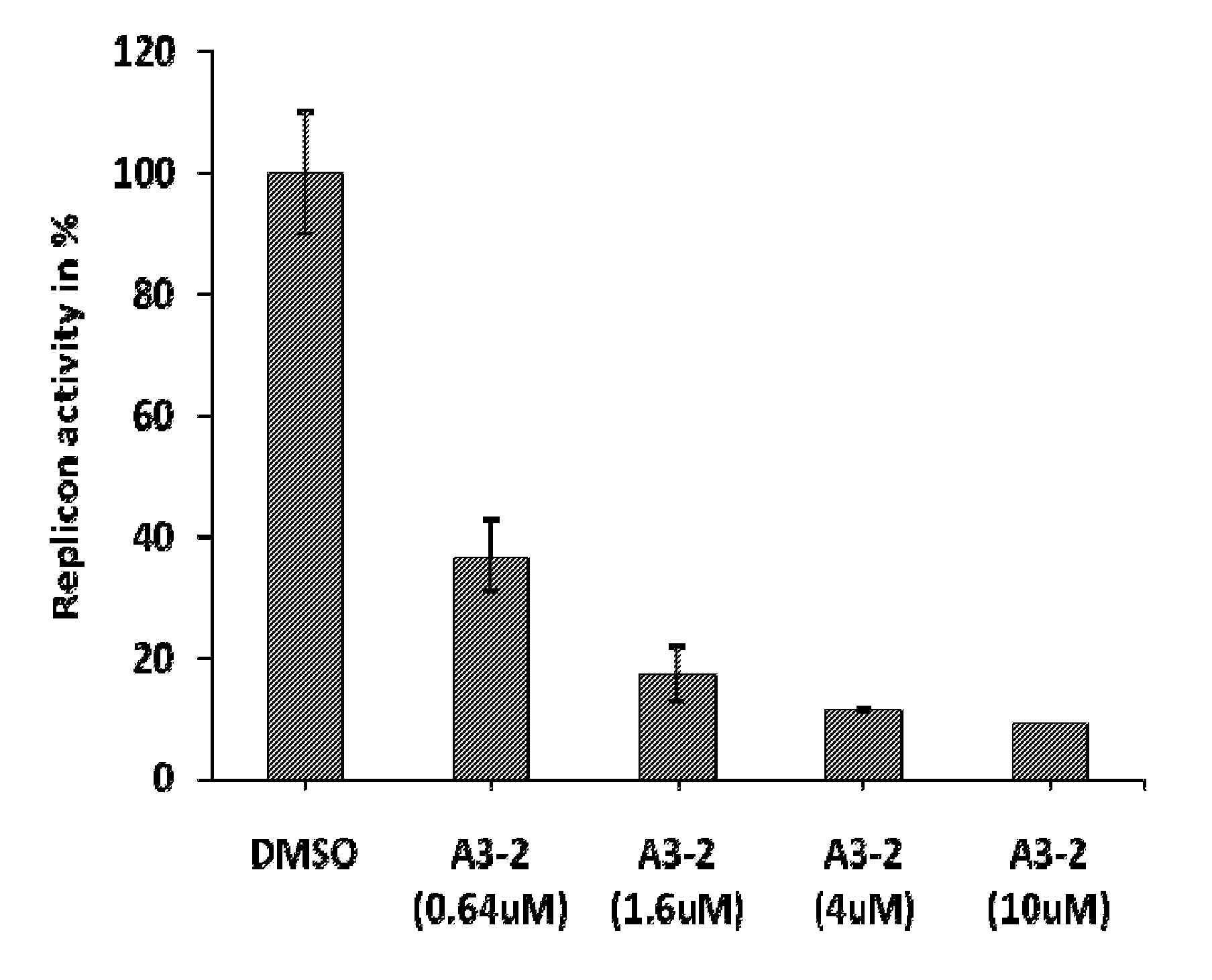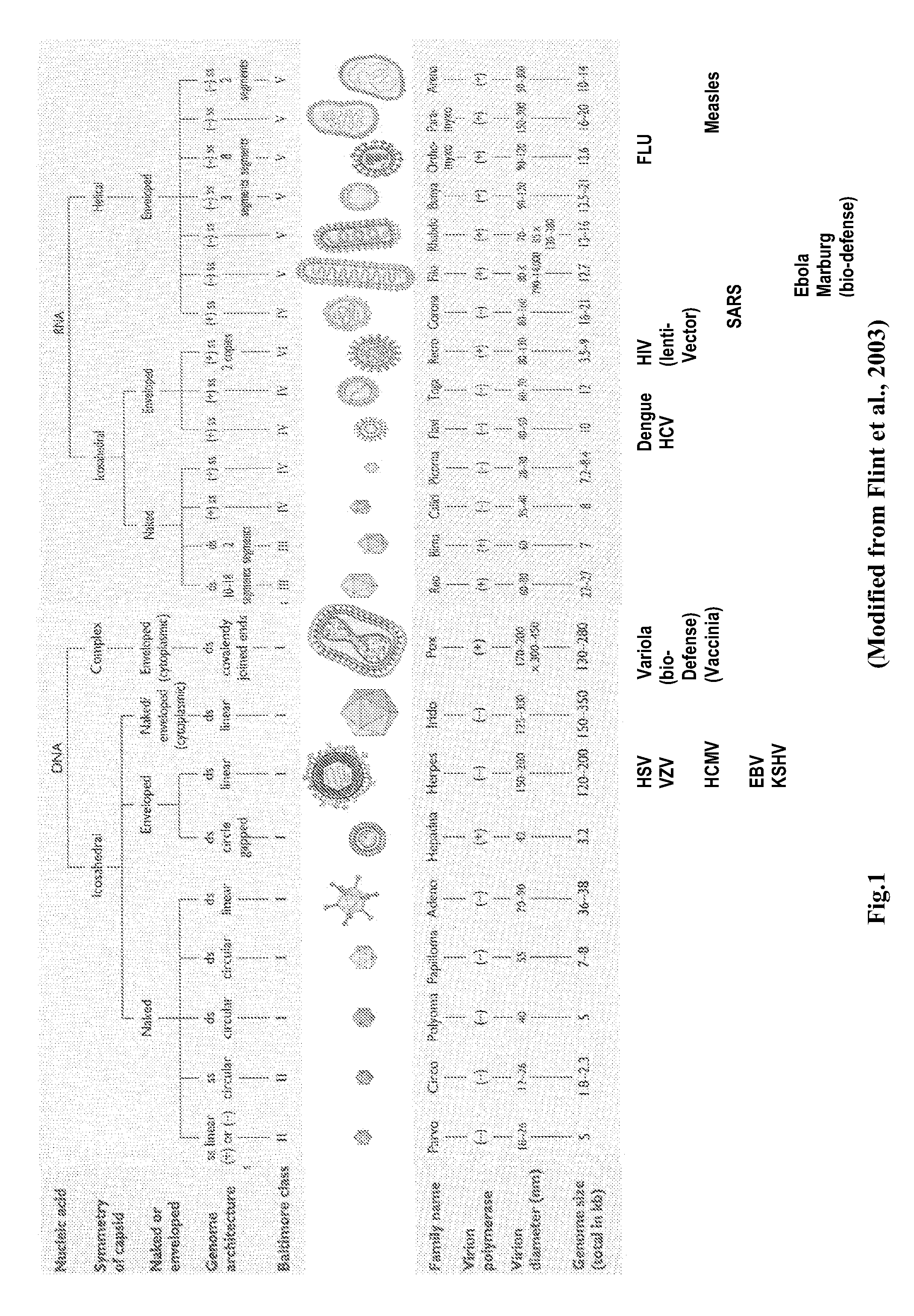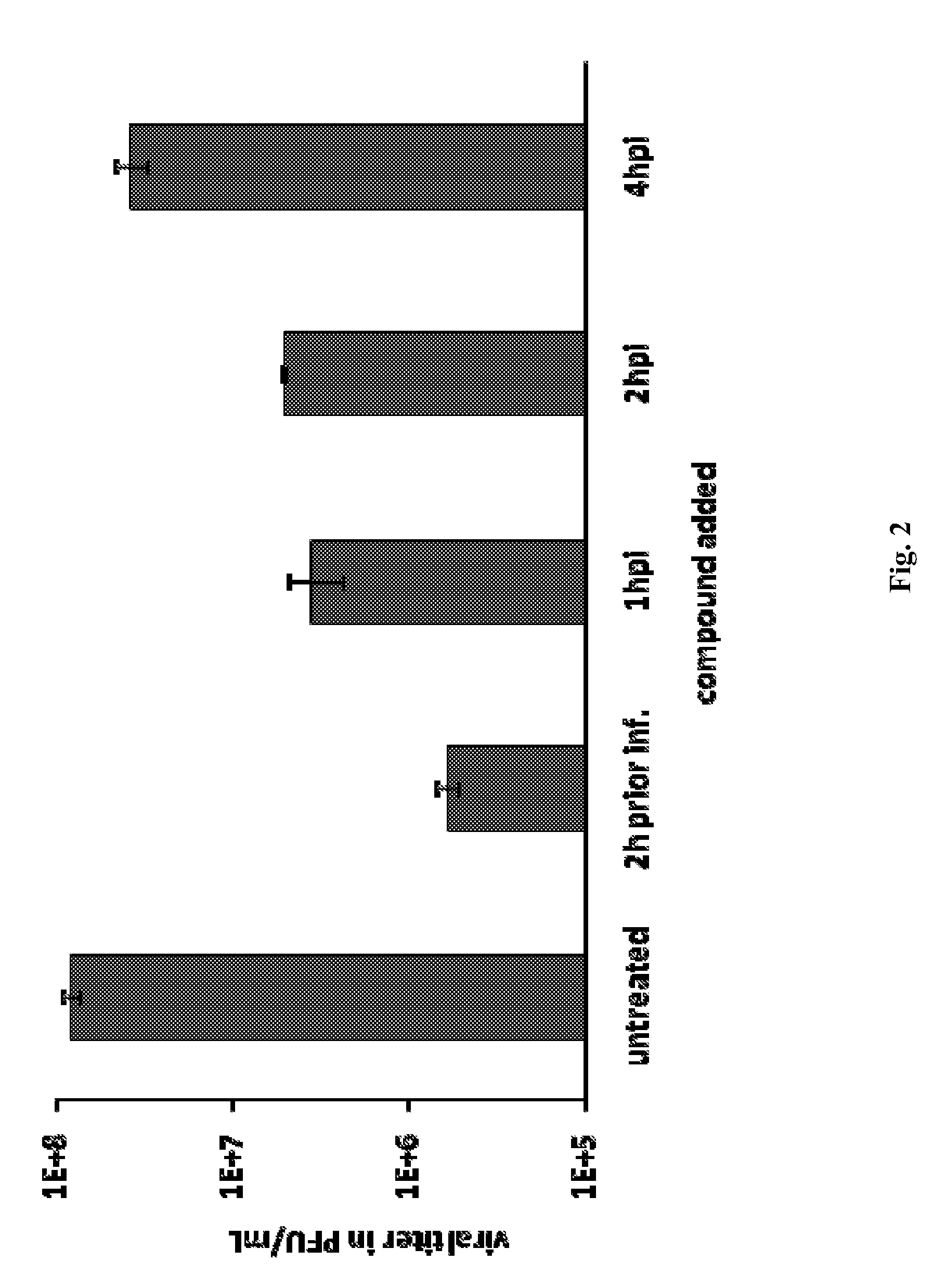Antiviral compounds and uses thereof
a technology of antiviral compounds and compounds, applied in the field of antiviral compounds, can solve the problems of fewer antiviral drugs available, severe threat to human health, viral infection and viral disease, etc., and achieve the effects of reducing or ameliorating the severity of viral infection, preventing the progression of viral infection, and reducing the duration of viral infection
- Summary
- Abstract
- Description
- Claims
- Application Information
AI Technical Summary
Benefits of technology
Problems solved by technology
Method used
Image
Examples
Embodiment Construction
5.1 Compounds
[0088]In certain embodiments, provided herein are Compounds of formula A3-H:
[0089]
and pharmaceutically acceptable salts, hydrates, solvates, prodrugs and stereoisomers thereof, wherein:
[0090]R1 and R2 are at each occurrence independently a C1-C8 alkyl group; or
[0091]R1 and R2, together with the nitrogen atom R1 and R2 are bound to, form a 3 to 10 membered heterocyclic ring; and
[0092]R3 is substituted or unsubstituted indole, substituted or unsubstituted phenyl, substituted or unsubstituted benzofuran, or substituted or unsubstituted pyridine.
[0093]In one embodiment, R1 and R2, together with the nitrogen atom R1 and R2 are bound to, form a 3 to 8 membered heterocyclic ring.
[0094]In another embodiment, R1 and R2, together with the nitrogen atom R1 and R2 are bound to, form unsubstituted pyrrolidone, unsubstituted isoindoline, unsubstituted morpholine or unsubstituted azepane.
[0095]In another embodiment, R1 and R2 are each independently a C1-C8 alkyl group, such as ethyl o...
PUM
| Property | Measurement | Unit |
|---|---|---|
| temperature | aaaaa | aaaaa |
| temperature | aaaaa | aaaaa |
| temperature | aaaaa | aaaaa |
Abstract
Description
Claims
Application Information
 Login to View More
Login to View More - R&D
- Intellectual Property
- Life Sciences
- Materials
- Tech Scout
- Unparalleled Data Quality
- Higher Quality Content
- 60% Fewer Hallucinations
Browse by: Latest US Patents, China's latest patents, Technical Efficacy Thesaurus, Application Domain, Technology Topic, Popular Technical Reports.
© 2025 PatSnap. All rights reserved.Legal|Privacy policy|Modern Slavery Act Transparency Statement|Sitemap|About US| Contact US: help@patsnap.com



